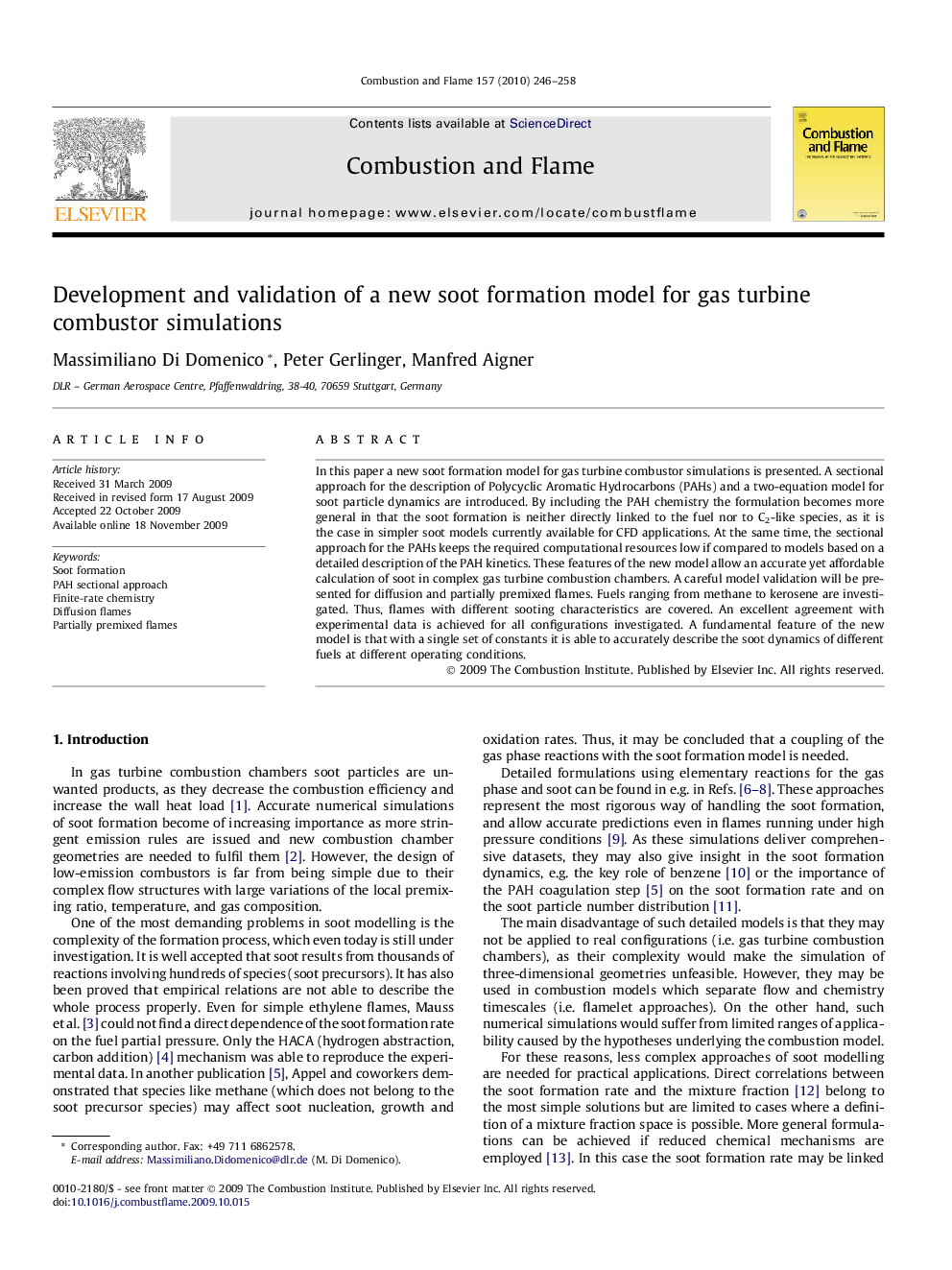| Article ID | Journal | Published Year | Pages | File Type |
|---|---|---|---|---|
| 169732 | Combustion and Flame | 2010 | 13 Pages |
In this paper a new soot formation model for gas turbine combustor simulations is presented. A sectional approach for the description of Polycyclic Aromatic Hydrocarbons (PAHs) and a two-equation model for soot particle dynamics are introduced. By including the PAH chemistry the formulation becomes more general in that the soot formation is neither directly linked to the fuel nor to C2-like species, as it is the case in simpler soot models currently available for CFD applications. At the same time, the sectional approach for the PAHs keeps the required computational resources low if compared to models based on a detailed description of the PAH kinetics. These features of the new model allow an accurate yet affordable calculation of soot in complex gas turbine combustion chambers. A careful model validation will be presented for diffusion and partially premixed flames. Fuels ranging from methane to kerosene are investigated. Thus, flames with different sooting characteristics are covered. An excellent agreement with experimental data is achieved for all configurations investigated. A fundamental feature of the new model is that with a single set of constants it is able to accurately describe the soot dynamics of different fuels at different operating conditions.
